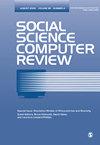Monitoring Looting at Cultural Heritage Sites: Applying Deep Learning on Optical Unmanned Aerial Vehicles Data as a Solution
IF 3
2区 社会学
Q2 COMPUTER SCIENCE, INTERDISCIPLINARY APPLICATIONS
引用次数: 0
Abstract
The looting of cultural heritage sites has been a growing problem and threatens national economies, social identity, destroys research potential, and traumatizes communities. For many countries, the challenge in protecting heritage is that there are often too few resources, particularly paid site guards, while sites can also be in remote locations. Here, we develop a new approach that applies deep learning methods to detect the presence of looting at heritage sites using optical imagery from unmanned aerial vehicles (UAVs). We present results that demonstrate the accuracy, precision, and recall of our approach. Results show that optical UAV data can be an easy way for authorities to monitor heritage sites, demonstrating the utility of deep learning in aiding the protection of heritage sites by automating the detection of any new damage to sites. We discuss the impact and potential for deep learning to be used as a tool for the protection of heritage sites. How the approach could be improved with new data is also discussed. Additionally, the code and data used are provided as part of the outputs.文化遗址掠夺监测:将深度学习应用于光学无人机数据的解决方案
掠夺文化遗产一直是一个日益严重的问题,威胁着国家经济和社会认同,破坏了研究潜力,并给社区带来创伤。对许多国家来说,保护遗产的挑战是资源往往太少,尤其是有偿的遗址保护员,而遗址也可能位于偏远地区。在这里,我们开发了一种新方法,该方法应用深度学习方法,使用无人机的光学图像来检测遗产地是否存在抢劫行为。我们给出的结果证明了我们方法的准确性、准确性和召回率。结果表明,光学无人机数据可以成为当局监测遗产地的一种简单方法,证明了深度学习通过自动检测遗址的任何新损坏来帮助保护遗产地的效用。我们讨论了深度学习作为遗产保护工具的影响和潜力。还讨论了如何利用新数据改进该方法。此外,所使用的代码和数据作为输出的一部分提供。
本文章由计算机程序翻译,如有差异,请以英文原文为准。
求助全文
约1分钟内获得全文
求助全文
来源期刊

Social Science Computer Review
社会科学-计算机:跨学科应用
CiteScore
9.00
自引率
4.90%
发文量
95
审稿时长
>12 weeks
期刊介绍:
Unique Scope Social Science Computer Review is an interdisciplinary journal covering social science instructional and research applications of computing, as well as societal impacts of informational technology. Topics included: artificial intelligence, business, computational social science theory, computer-assisted survey research, computer-based qualitative analysis, computer simulation, economic modeling, electronic modeling, electronic publishing, geographic information systems, instrumentation and research tools, public administration, social impacts of computing and telecommunications, software evaluation, world-wide web resources for social scientists. Interdisciplinary Nature Because the Uses and impacts of computing are interdisciplinary, so is Social Science Computer Review. The journal is of direct relevance to scholars and scientists in a wide variety of disciplines. In its pages you''ll find work in the following areas: sociology, anthropology, political science, economics, psychology, computer literacy, computer applications, and methodology.
 求助内容:
求助内容: 应助结果提醒方式:
应助结果提醒方式:


